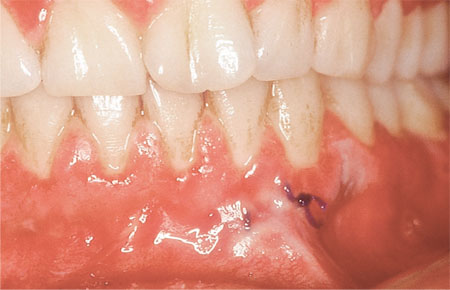Chapter 2
The Role of Clinical Investigations
Aim
The aim of this chapter is to allude to those clinical investigations that are of value in formulating a definitive diagnosis.
Outcome
Having understood this chapter, the reader should be aware of those relevant investigations that are used to either confirm diagnoses or add information to help formulate a definitive diagnosis. The reader will be aware of the need to identify appropriate investigations for particular conditions and, in addition, understand the limitations and interpretation of those investigations.
Introduction
The number of investigative procedures now available is extensive and continues to expand with advances in technology. It should be borne in mind that while investigations are a most important step in the clinical management of many patients, they must not be used as a substitute for a detailed clinical history and examination.
General Considerations
Before embarking upon any investigative procedure, a variety of general factors need to be considered. These include the nature and safety of the test, its potential benefit to the patient, any possible adverse effects, its cost effectiveness and whether the result is likely to alter the management of the patient’s condition. Undertaking investigative procedures for the sake of interest is unacceptable. The patient must be fully informed of the need for the investigation, its advantages and disadvantages, including possible adverse events, before proceeding. As in all aspects of patient care, the balance of risk of an investigation must favour the patient.
When requesting investigative procedures, the following considerations should be borne in mind:
-
What information is required?
-
Which test(s) will provide that information?
-
How are the results interpreted?
Indications for Investigation
Whilst investigative procedures are predominantly used to support or confirm a clinical suspicion or diagnosis, they may also be used to:
-
exclude abnormalities.
-
monitor disease activity/progression.
-
measure response to therapy.
Interpretation of Investigations
The results of any investigation must be interpreted with caution so as to avoid drawing erroneous conclusions that may lead to inappropriate patient management. For example, in serological investigations:
-
Slightly abnormal results should be repeated for confirmation. They may be within the methodological variance for the assay.
-
Compare results with previous values (if available) to ascertain any trend or change.
-
Compare results with other associated parameters to ascertain consistency.
-
Identify possible artefacts.
The normal range is usually taken as the mean ± 2 standard deviations, i.e. 95% of the population fall within that range. It is therefore important to recognise that results outside the normal range may be ‘normal’ for a particular patient and may not signal anything untoward, especially if the result is not corroborated by other test results.
Specificity and Sensitivity of Tests
It is important when interpreting investigations to have some understanding of the specificity and sensitivity of the investigations concerned. An important area for such considerations is when testing for autoantibodies. For example, the finding of certain autoantibodies does not necessarily confirm the presence of a particular disease, whilst equally, their absence may not preclude that disease.
The specificity of a test is defined as:
-
The percentage of people without the disease who have a negative test result, e.g. 95% specificity implies 5% false positive results.
The sensitivity of a test is defined as:
-
The percentage of people with the disease who have a positive test result, e.g. 95% sensitivity implies 5% false negative results.
Biopsy
Tissue biopsy and subsequent histological examination remains a particularly valuable investigation in the diagnosis of gingival and oral mucosal disease. Although the technique is usually straightforward, it is essential to ensure that the pathologist receives a diagnostic sample that is not compromised, either by injection of local anaesthetic solution directly into the biopsy specimen, or traumatic handling of the tissue either at the time of the surgery or subsequently.
As with all clinical investigations, the request form that will accompany the specimen must be accurately and fully completed, providing details of the clinical features of the condition, the patient’s medical history, including details of any medication and a differential diagnosis.
When undertaking gingival biopsies, it is important to consider that histological interpretation can be confounded due to the level of background inflammatory change that is usually present within the gingival tissues. For this reason, it may be preferable to biopsy alternative sites if appropriate (Fig 2-1).

Fig 2-1 Slide demonstrating a suture placed at a para-gingival biopsy site. A gingival biopsy has been avoided to provide a representative sample devoid of the chronic inflammation often found within gingival biopsies secondary to plaque accumulation.
The following considerations will help ensure that a diagnostic biopsy sample is obtained:
-
Avoid injecting local anaesthetic directly into the tissue to be removed.
-
Do not tear or crush the tissue during the procedure.
-
Excise a representative sample of the lesion.
-
Additionally, excise any areas that differ from the overall appearance of the lesion. This may necessitate multiple sampling.
-
Remove an adequate size of tissue. Aim for approximately 8–10mm in diameter and ensure that subepithelial tissues are included.
-
Avoid biopsying an ulcer alone – by definition there will be no epithelium and this will compromise histological diagnosis.
-
Perilesional tissue is often of diagnostic value.
-
Place the specimen on a piece of card (e.g. t/>
Stay updated, free dental videos. Join our Telegram channel

VIDEdental - Online dental courses


